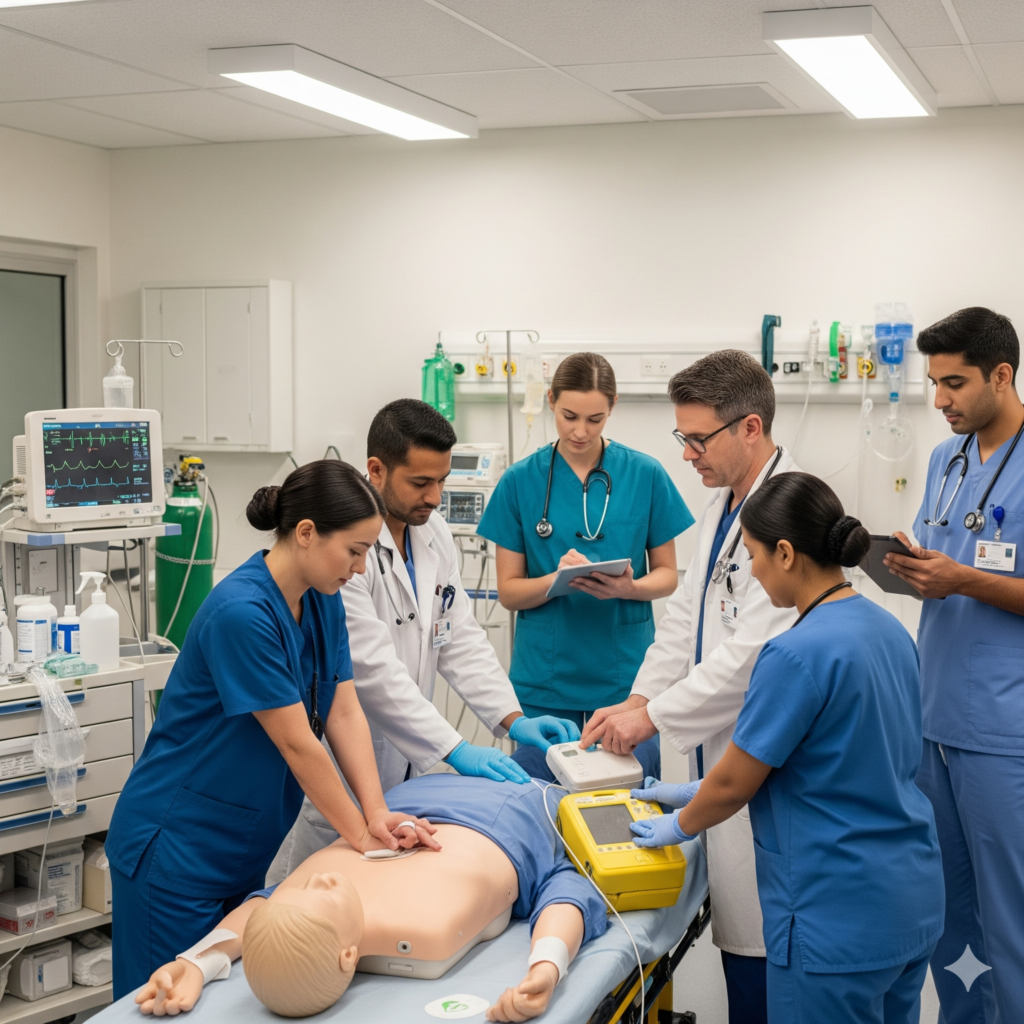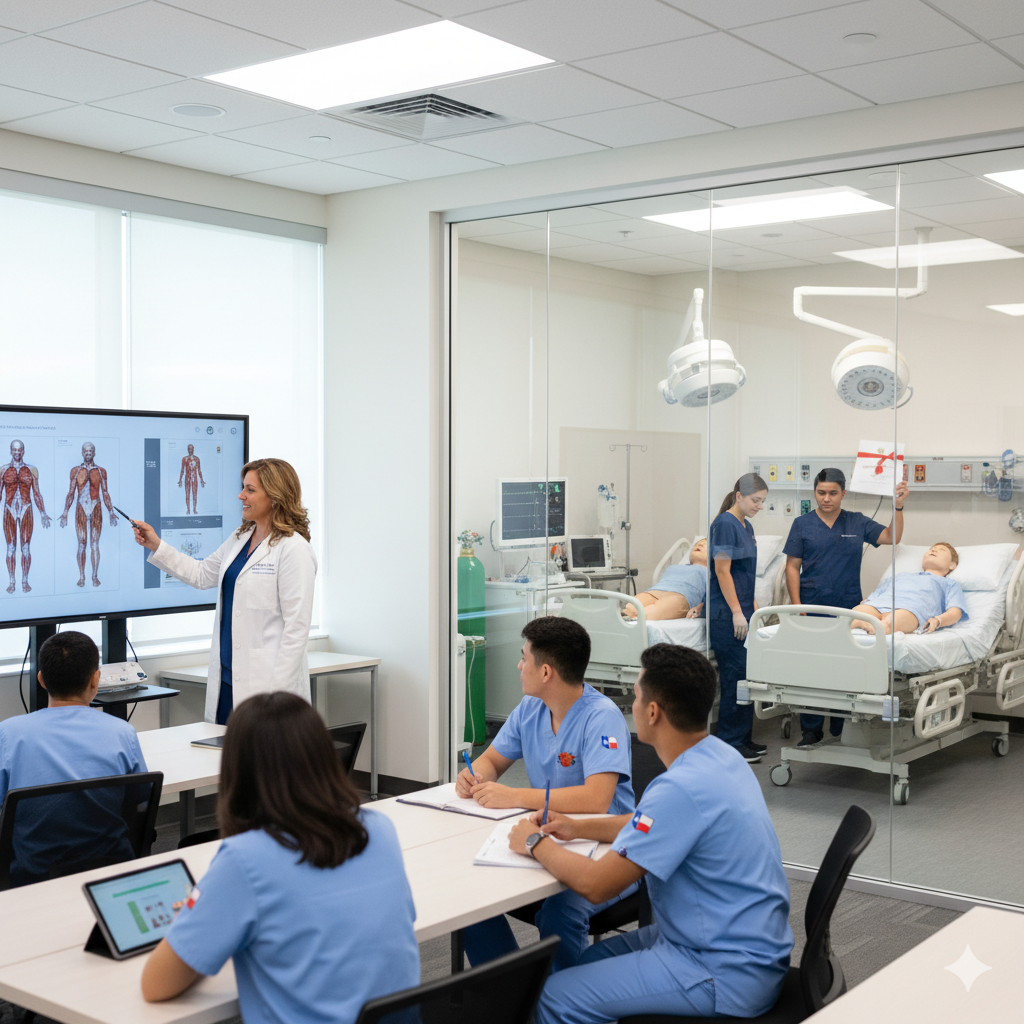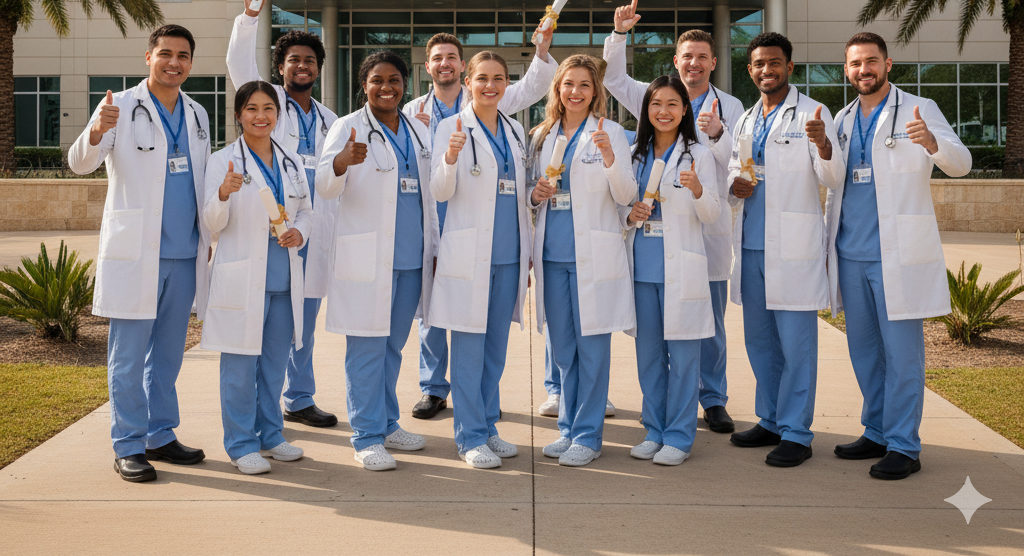The healthcare industry in the United States is one of the fastest-growing sectors, offering diverse opportunities for professionals who are passionate about saving lives and making a difference. Whether you are a registered nurse, medical assistant, paramedic, or an aspiring healthcare professional, certifications like BLS (Basic Life Support) and ACLS (Advanced Cardiovascular Life Support) are invaluable credentials that can elevate your career prospects, enhance your skills, and make you a vital part of any healthcare team.
In this blog, we’ll explore the significance of BLS and ACLS certifications, their differences, how they benefit healthcare professionals, and why they are essential for career growth in the U.S.
Understanding BLS and ACLS Certifications
1.What is BLS Certification?
Basic Life Support (BLS) is a critical certification that equips healthcare professionals with the fundamental skills to respond effectively in life-threatening emergencies. BLS training focuses on cardiopulmonary resuscitation (CPR), automated external defibrillator (AED) usage, and basic airway management.
The primary goal of BLS certification is to provide immediate life-saving care to adults, children, and infants until advanced medical help arrives. Healthcare professionals, including nurses, physicians, medical assistants, and even certain non-clinical staff, are encouraged to obtain BLS certification to improve patient outcomes during emergencies.
2.What is ACLS Certification?
Advanced Cardiovascular Life Support (ACLS) is an advanced certification designed for healthcare providers who respond to cardiovascular emergencies, such as heart attacks, cardiac arrests, and stroke. Unlike BLS, ACLS training delves deeper into advanced clinical skills, including:
Interpreting electrocardiograms (ECGs)
Administering emergency medications
Managing respiratory emergencies
Coordinating team-based resuscitation
ACLS certification is primarily intended for physicians, nurses, paramedics, and other healthcare professionals involved in acute patient care. It builds on the foundation of BLS, adding specialized skills for high-acuity patients.
Key Differences Between BLS and ACLS
Understanding the distinction between these two certifications is essential for healthcare professionals planning their career paths.
| Feature | BLS | ACLS |
|---|---|---|
| Target Audience | All healthcare providers | Advanced healthcare providers (nurses, doctors, paramedics) |
| Focus | CPR, AED, airway management | Cardiac arrest management, ECG interpretation, emergency medication administration |
| Complexity | Basic | Advanced |
| Prerequisite | None | BLS certification is usually required |
| Duration | 4-6 hours | 2 days (classroom + hands-on training) |
While BLS is a starting point for all healthcare professionals, ACLS is a specialized skill set required for those handling critical emergencies.
Why BLS and ACLS Certifications Matter in the U.S. Healthcare System
Enhances Patient Care and Safety
Patient safety is the top priority in the U.S. healthcare system. Hospitals and clinics emphasize having certified staff who can respond immediately to emergencies. BLS and ACLS-certified professionals are trained to provide life-saving interventions, reducing the risk of fatalities in emergency situations.
Meets Employer Requirements
Many hospitals, clinics, and healthcare organizations in the U.S. require BLS and ACLS certifications as part of their employment criteria. Employers prefer candidates who are certified because it demonstrates competency, reliability, and a commitment to patient care.
Boosts Career Opportunities
Holding BLS and ACLS certifications can open doors to higher-level positions. For example:
Registered nurses with ACLS certification are often considered for critical care units.
Paramedics and EMTs with ACLS credentials can qualify for specialized emergency response teams.
Physicians with ACLS certification demonstrate advanced skills, making them eligible for leadership roles in emergency medicine.
Supports Licensing and Continuing Education
Certain states and healthcare boards in the U.S. mandate BLS and ACLS certification for professional licensing and re-certification. Maintaining up-to-date certifications is crucial for career longevity and compliance with federal and state regulations.
Develops Confidence in Emergency Situations
BLS and ACLS training equip healthcare professionals with practical skills and hands-on experience in simulated emergency scenarios. This training boosts confidence, ensuring providers can act decisively during high-pressure situations, ultimately saving more lives.
Benefits of BLS Certification for Your Career
Foundation for Advanced Certifications
BLS certification is often a prerequisite for advanced courses, including ACLS and PALS (Pediatric Advanced Life Support). It builds the foundation for lifelong learning and skill development in emergency care.
Versatility Across Healthcare Settings
BLS-certified professionals are valuable in hospitals, outpatient clinics, nursing homes, schools, and even corporate workplaces. The skills learned are transferable and applicable in various clinical and non-clinical environments.
Increased Employability and Job Security
Employers prioritize candidates who can provide immediate life-saving care. BLS certification enhances your resume and employability, giving you a competitive edge in the healthcare job market.
Quick Response During Emergencies
From sudden cardiac arrests to choking incidents, BLS training empowers professionals to act immediately and effectively, improving patient outcomes before advanced care arrives.
Benefits of ACLS Certification for Your Career
Specialization in Critical Care
ACLS-certified professionals gain advanced skills in managing cardiac emergencies, making them suitable for critical care units, emergency departments, and specialized hospital teams.
Leadership in Emergency Response
ACLS training emphasizes team coordination and advanced decision-making, positioning certified professionals as leaders during resuscitation efforts.
Higher Salary Potential
Due to the specialized skill set, ACLS-certified professionals often qualify for higher-paying positions and promotions within hospitals and emergency response teams.
Improved Patient Outcomes
By mastering advanced interventions such as ECG interpretation, airway management, and emergency drug administration, ACLS-certified professionals significantly improve patient survival rates during life-threatening events.
How to Obtain BLS and ACLS Certifications in the U.S.
Step 1: Choose a Certified Training Provider
Look for organizations accredited by the American Heart Association (AHA) or recognized by your state healthcare board. Accredited providers ensure the training meets national standards.
Step 2: Register for the Course
You can choose between in-person, blended, or online courses, depending on your schedule. In-person and blended courses often include hands-on practice, which is critical for skill retention.
Step 3: Attend the Training
BLS Course: Typically 4–6 hours with a combination of video demonstrations, instructor-led sessions, and practical skill testing.
ACLS Course: Typically 2 days, including classroom instruction, hands-on practice, and simulation scenarios.
Step 4: Pass the Certification Exam
Both BLS and ACLS courses include written and practical exams. You must demonstrate competency in CPR, AED use, and advanced resuscitation techniques.
Step 5: Receive Your Certification
After successfully completing the course and passing the exam, you receive a certification valid for 2 years. Renewal courses ensure your skills remain current and compliant with national standards.
Tips to Maximize the Value of Your Certifications
Renew Regularly
Both BLS and ACLS certifications have a limited validity period, typically 2 years. Staying current ensures your skills are up-to-date and recognized by employers.
Apply Skills in Real-Life Scenarios
Seek opportunities in clinical rotations, volunteer work, or simulation labs to apply your knowledge and gain confidence.
Combine Certifications
Many healthcare professionals benefit from having both BLS and ACLS certifications. BLS forms the foundation, while ACLS enhances advanced emergency skills.
Include Certifications on Your Resume
Highlight your BLS and ACLS credentials in your resume, cover letter, and LinkedIn profile to showcase your expertise and commitment to patient care.
Final Thoughts
BLS and ACLS certifications are more than just credentials—they are lifesaving skills that enhance your career, expand your opportunities, and make you an indispensable part of the healthcare system in the U.S.
Whether you are entering the healthcare field or looking to advance into critical care roles, obtaining BLS and ACLS certifications is a strategic investment in your professional growth. They not only improve patient outcomes but also empower you to act confidently in emergencies, earn higher positions, and comply with healthcare regulations.
If you are serious about a thriving career in healthcare, getting BLS and ACLS certifications is the step that can transform your professional journey while making a real difference in people’s lives.




